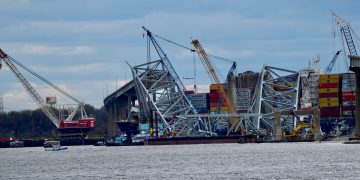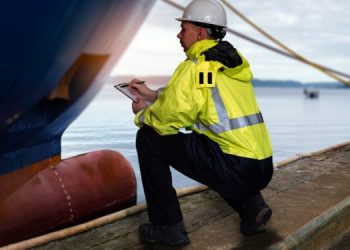In today’s shipping industry, it is beyond doubt that ECDIS has become the main tool for watchkeeping officers on board ships. As a result the Masters, navigating officers, and ship-owners should be aware of the benefits of the chart display, the safety settings, and the alarm system of ECDIS.
However, ECDIS can display large amounts of information which, unless carefully managed, can overload and potentially confuse watchkeepers. There should be understood that
- not all available information needs to be displayed at all times
- essential navigational information may be hidden or obscured on a cluttered display
General guidance for the level of information displayed in different navigation scenarios should be provided in company’s SMS.
ECDIS failures in the setup procedures and the use of ECDIS safety settings and alarm systems have led to a number of groundings (e.g. CSL Thames, LT Cortesia, MT Ovit) which may have been avoided. It is a fact that, the use of ECDIS safety settings is usually overlooked by navigating officers due to either inadequate knowledge or rush to issue the passage plan. Safety settings are very important for ECDIS display, as they control how the ECDIS presents depth information, making it easier to visualize areas of water that are safe for the vessel to navigate in from those which are not.
Important settings for ECDIS display
The navigators must understand the main safety setting for the shallow contour, safety depth, safety contour and deep water contour in order to set them properly in order to firstly, avoid unwanted incidents and then to achieve a sensible implication. Shallow contour value is used to tell ECDIS what is the value of shallow waters for our draft. This is the value of depth below which it is definite for the vessel to get aground. The shallow contour value need to be equal to or more than the draft of the vessel.
Safety contour is the contour line above which we can navigate without any water depth concern. Safety depth is the only depth setting on ECDIS, it is the depth of the water we can safely navigate upon. Deep water contour is a relative term and user is free to set as per what he believes could be deep water for him. Entering the safety settings will warn us with an alarm when vessel enters in shallow waters. Danger detection settings can help in giving pre-warning of the dangers ahead. We only need to define the area in which we need the ECDIS to warn us.
Setup and use of ECDIS alarms
Alarms are another issue on ECDIS. Due to many alarm indicators and warnings most OOWs due to Alarm fatigue prefer to turn the alarms in silent mode. Deck officers who are unfamiliar with the setup and use of ECDIS alarms have been involved in groundings in shallow waters incidents and other unfavorable situations. A clear Policy regarding ECDIS alarms handling will guide the OOWs to the appropriate awareness level during their watch.
SQE Marine has prepared a checklist aiming to provide the necessary steps required, to ensure vessel’s proper ECDIS setup.
















































































